- remind me tomorrow
- remind me next week
- never remind me
The X Button
Neverland Knows Best
by Todd Ciolek,

What happened last week? Well, we said goodbye to Neverland Company, the developer of the Lufia games and the Rune Factory series. I'll discuss this in greater detail further down, but right now the news reminds me of The Gaming Intelligence Agency's old letters page, of all things.
The GIA was originally active from 1998 to 2002, and they started up again just this year. The new site has no letters page, as such things are archaic these days. However, one of the old site's biggest attractions was a reader-response column where opinions were spouted, grudges were vented, and it all provoked some interesting discussion. I even had a few letters published there.
But what do I remember most about The GIA's letters page, now that Lufia's creator is gone? This.

It seems appropriate.
NEWS
DRAGON QUEST COMES TO IOS, ANDROID, SOBERING REALIZATIONS
Getting Dragon Quest on Android and iOS devices isn't that big a deal, but when Square Enix gives it away for nothing…well, it's no surprise that the company went through a million free downloads of Dragon Quest. And it wasn't just a port of the old NES Dragon Quest. It's a revamped version with a vaguely Super NES palette.
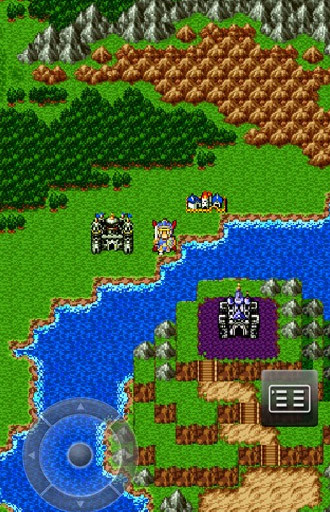
This offer applies only to the Japanese market for now., but You can nab it by the usual trickery if you're in North American or Europe. For an even better deal, I suggest traveling back in time to 1990 and getting a free copy of Dragon Warrior with your Nintendo Power subscription.
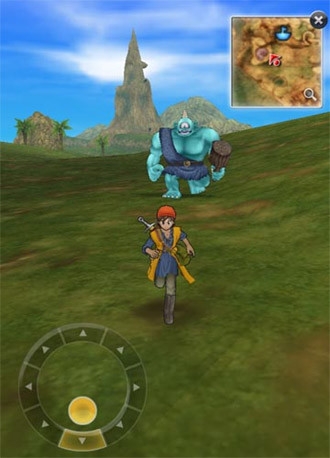
In other Dragon Quest news, the eighth installment of the series is headed to the iOS and Android market on December 12. That's only for Japan once again, of course. The port looks pretty impressive for a compact version of a PlayStation 2 game, though Square Enix realizes this and charges accordingly. It'll be 2800 yen when it hits Japan, and I wouldn't be surprised if Square bumps that up to thirty bucks for the West. Of course, that's assuming the game makes its way over here. Dragon Quest is oddly quiet 'round these parts.
What Square Enix products can you buy here in North America? Well, you can reserve the Bravely Default Collector's Edition on Amazon. It includes the game, an artbook, a soundtrack, and 34 AR cards. You'll have to wait until February to receive it, of course.
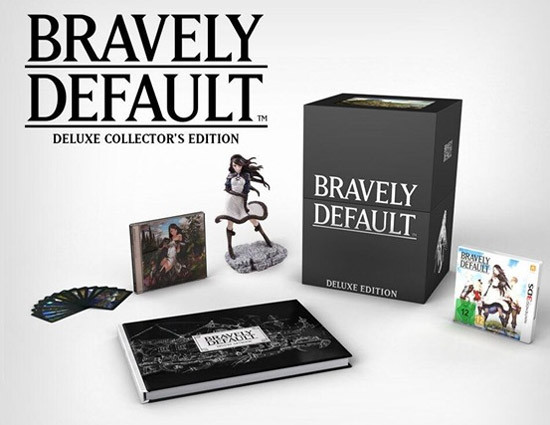
Meanwhile, our friends in Europe get Bravely Default this December 6. They also get a figurine in their special edition. And you know what else? I bet they'll get the just-announced sequel, Bravely Second, before North America does. Sometimes this continent just can't win.
PLAYSTATION 4 TO GET 'CRITICALLY ACCLAIMED' BACKWARDS COMPATIBILITY
The PlayStation 4's lack of backwards compatibility may be a deal-breaker for some, but Sony tried to allay this by promising support for older titles through the Gaikai streaming service. Now Sony's dropped another detail by saying that “critically acclaimed” PlayStation 3 will be available. And what does that translate to? Probably anything that's on Sony's Greatest Hits label. That's potentially lacking, since one of the nicer aspects of backwards-compatible hardware lies in picking up obscure titles for prior systems. It won't be as much fun if the PS4 runs only games with big budgets or nice Metacritic numbers.
WATCH THIS SPACE FOR THE NEXT TALES GAME
What's the next Tales RPG? I don't know yet. In fact, most of the world doesn't know. But you'll want to watch this website, where Namco's slated to announced the next “mothership” title in a week. While you wait, you can have fun trying to guess the plot of the new game. Take some celebrity names, come with a technobabble word for a fantasy-RPG power source, and throw it all together! I've got hero Cyler Drandage and his childhood friend Kira Arceneaux ensnared in a conspiracy to drain their world of…uh, let's say Magus Magneria energy!
IN RETROSPECT: NEVERLAND COMPANY
If a history of daring, beloved game developers is ever written, Neverland Co. Ltd. likely won't merit more than a few lines. When the company announced its bankruptcy and closure last week, most fans remembered them for Lufia and Rune Factory, and they didn't do it with the same profusion and wailing one would see if Treasure, tri-Ace, or another cult icon of Japan's game industry shut down. Neverland doesn't have that sort of following.
It's easy to see why fervent accolades eluded Neverland. For twenty years the company faded in and out of obscurity, riding on the occasional emergence of their Lufia franchise and sometimes making well-received games without anyone knowing it. Their name dodged the spotlight much of the time, but there was something dependable at the core of Neverland's craft. And that's what we should remember now: Neverland's gift for subtly creative games that often arrived right when we needed them the most.
The bulk of 1993 wasn't very kind to the devoted RPG nerds of North America. The genre's pickings were slim unless you could afford a Sega CD and Lunar: The Silver Star, and just about any RPG would've satisfied Super NES owners. It was into this void that Taito released Neverland's first game: Lufia and the Fortress of Doom.

Neverland's debut strikes hard at first. All booming score and grim narration, Lufia's prologue begins where most RPGs end, with a ragtag clump of heroes raiding the villains' floating island. It's an introduction to the game's battle system as well as its backstory, as the player guides the warrior Maxim, the sorceress-general Selan, and their allies through easily won battles against the allegedly godlike Sinistrals. They succeed, but not without tragedy. Lufia then turns to its real story, set 90 years after the pyrrhic victory of the prologue.
Lufia and the Fortress of Doom is not an exceptional RPG, but it fooled many of us back in its day. The central storyline more or less retells the first two Ys games with slightly more interesting versions of the red-haired hero and mysterious blue-haired girl, but the narrative vanishes for long stretches. In its place, there's only a tedious march through dungeons and random battles, all turned duller by a combat system antiquated even in the early 1990s.
Had it never reached foreign shores, Lufia and the Fortress of Doom might be moldering beside average Japanese RPGs like Villgust and Gdleen. Yet it was something to the RPG-starved American kids of 1993, when a game didn't need to be amazing through and through. It just needed to open well.
It seemed unlikely that Lufia II: Rise of the Sinistrals would be all that much better. Its story follows Maxim, Selan and the other heroes from the original game's prelude, and Lufia II ends much like its predecessor began. Yet it shows Neverland's growing knack for small innovations. Maxim's story is yet another world-saving journey, but it allows him growth. He gets married (and not to his fretful childhood friend), has a kid, and ends up doing what any good hero should be prepared to do. Tempting as it must have been for Neverland and director Masahide Miyata to revise things, Lufia II sticks to the first game's grim outline. Maxim and Selan don't survive their trip to the Sinistrals' island, and the ending is all the more memorable for it.
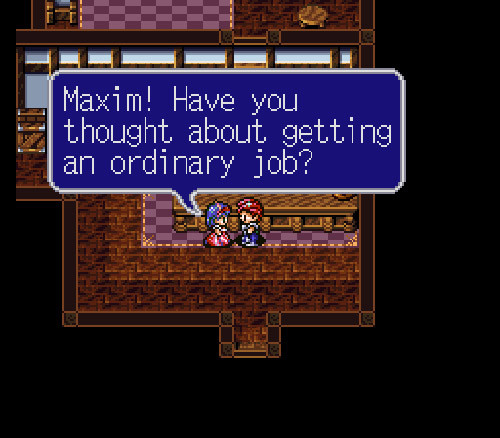
Lufia II also emerged as a substantial improvement in gameplay. Battles remain a bit of a chore, but the dungeons now brim with puzzles and let players see (and distract) enemies before fighting. Neverland even threw in a randomly generated bonus stage that works much like a dungeon hack, a sign of where they'd later go.
Like the first Lufia, Rise of the Sinistrals came at precisely the correct time. In 1996, RPG fans watched the Super NES fade while they pined for countless impressive Japanese RPGs that would remain unlocalized. Their demands and angry letters brought no last-minute offerings from Square or Enix, but Natsume stepped in with Lufia II. Its strong finale and side attractions made for a fine end to this little era. Even today, it's seen as Neverland's high point.

This was not the end of the 16-bit days for Neverland, however. Just as Lufia II sneaked out in North America, its creators labored on two more Super Famicom RPGs for 1996. One was Energy Breaker, a hybrid where battles play out with grids and strategic commands. The characters explore towns and manage resources in general RPG fashion, and the story around it is notable perhaps for featuring a heroine in her 20s. Energy Breaker is a curious spot in Neverland's history; it's not listed on the company's website, though the credits feature a number of Neverland staffers and the original Lufia's title heroine makes a cameo, theme music and all. The artwork may look familiar as well. It's by Yasuhiro Nightow, who at the time had just started up a little manga series called Trigun.
Neverland's other Super Famicom closer was Chaos Seed, a novel mixture of an action-RPG and an ecological simulator. Set in a fantasy recast of ancient China, it drops its protagonist into an underground cavern filled with earthly energies. There the hero must fend off intruders, dig for treasures, and maintain the maze room by room. Chaos Seed may well be Neverland's most inventive game, and it later saw an improved port on the Sega Saturn. Neverland still remembered Lufia, though the remainder of the 1990s made it difficult for them. Lufia III: Ruins Chaser rolled out for the PlayStation with great fanfare in 1998. Publisher Nihon-Flex sponsored Neverland, and Natsume made plans for a North American release before much was really known about the game. Ruins Chaser unfolded centuries after the first two Lufia titles and promised a more technologically advanced world, but the public would never see it. Nihon-Flex went bankrupt, and Ruins Chaser disappeared. Popular 16-bit RPGs like Final Fantasy, Dragon Quest, and Lufia's thematic cousin Lunar continued on the PlayStation, but Neverland's signature series wouldn't join them.
Plans for Lufia III revived in less ambitious surroundings. In 2000, the game moved to the Game Boy Color and became Lufia: Beginning of Legend, a prequel to Lufia II. This idea was overhauled again, and the game finally emerged in 2001 as Lufia: The Legend Returns. Now unfolding a hundred years after the first Lufia (and therefore 200 years after Lufia II), The Legend Returns once again finds a red-haired hero quibbling with a blue-haired woman of dubious motives. Yet this was a muted return for the series. The randomly arranged dungeons left some fans dissatisfied, and the Game Boy Color constrained most attempts at epic grandeur. Lufia, once the RPG of the moment on the Super NES, just didn't matter as much.
Neverland lost the Lufia series after this, as Taito turned a Game Boy Advance installment over to a studio called Atelier Double. At least Neverland could take solace in the switch leading nowhere good; Atelier Double's creation, Ruins of Lore, remains the worst entry in Lufia canon.
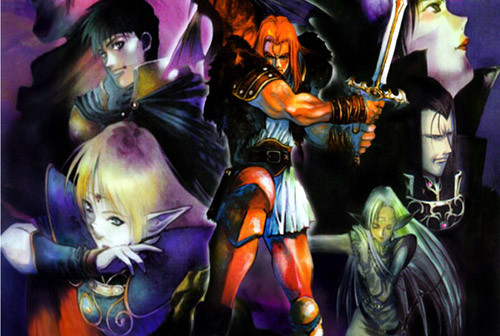
Elsewhere, Neverland did favors to RPG fans on the Dreamcast. If one didn't care for the cartoonish tones of Skies of Arcadia or Grandia II, there wasn't much else on the system. Here Neverland arrived with an action-RPG based on Record of Lodoss War. Far closer to Diablo than the typical menu-driven RPG, the game is an efficient dungeon-dive with a heavy emphasis on combat. It proved a cult success well outside of the anime-fan spectrum, though many who enjoyed it didn't know of Neverland's part.
Action-RPGs proved Neverland's forte in the following years. As Sega refashioned the Shining series on the PlayStation 2, Neverland jumped in to work on Shining Force Neo and Shining Force Exa. Neo had a rough start, but Exa amended much of the problems. While Exa remains popular (the heroes dropped by the Project X Zone crossover, after all), Neverland wouldn't stick with the series. Subsequent Shining games went to developers like Nex Entertainment and the now-defunct Flight-Plan, leaving Neverland to look elsewhere.
Neverland attempted something new with CIMA: The Enemy, released on the Game Boy Advance in 2003. Some of Lufia's staples are apparent here, such as Miyata's fondness for the quarrelsome double-act of a redhead hero with a quick temper and a blue-tressed heroine with a hidden side. Yet there's some attempt at breaking from cliché: CIMA presents a world that's part fantasy and part Wild West, a world where a train of settlers might veer into a pocket dimension. Tasked with seeing the passengers to safety, the heroes become tour guides in a netherspace of soul-eating horrors.
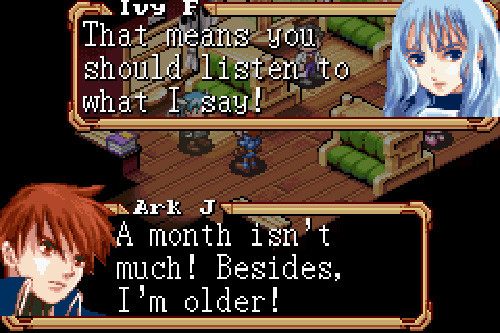
Promising ideas make CIMA: The Enemy's failures all the more depressing. Directing characters is a hassle despite numerous control shortcuts, and the diagonal perspective and awkward translation confuse things further. The whole thing feels as though it should be played with a mouse, even if that was impossible on the Game Boy Advance. To make things worse, CIMA: The Enemy went through strange release plans and emerged in Japan two years after Natsume brought it to America. It inspired no sequels.
Other gigs offered limited returns for Neverland. Square Enix's Egg Monster Hero seemed a decent first-found DS game and was headed for a U.S. release, but it stayed in Japan for reasons unknown. Rengoku: The Tower of Purgatory and its sequel, both developed with Hudson Soft, met with critical lambasting on the PSP. Dungeon hacks remained a staple of Neverland, and in 2008 they took on a long-running Sega series with Sakura Wars: Dramatic Dungeon. Once a dominant force in Japan's game circles, Sakura Wars was drifting toward retirement by then, and Neverland's treatment did little to resuscitate it.

Neverland found firm ground with a company called Marvelous and a series called Harvest Moon. Debuting in 2006, Rune Factory: A Fantasy Harvest Moon was a good fit for Neverland. Experienced in mixing genres, the company fit the Harvest Moon staples of feeding animals, tending crops, and starting a family into a lightweight action-RPG quest. Developer ArtePiazza attempted a similar revamp with Innocent Life: A Futuristic Harvest Moon on the PSP. It didn't last. Rune Factory did, and Neverland was there to create more like it: sequels followed for the DS, along with Rune Factory Frontier on the Wii.
In the midst of Neverland's Rune Factory work, Lufia appeared yet again. Square Enix had acquired Taito in 2005, and four years later they gave Neverland a Lufia II remake for the DS. Lufia: Curse of the Sinistrals retells the whole of Lufia II, transforming it into a multi-character action-RPG. This raised some hackles among Lufia fans, as did Yusuke Naora's more modern-looking redesigns of the characters. Curse of the Sinistrals also expands the story, though it makes a few things worse. One example would be inept thieves Berty and Bart. Annoying in the original game, they become the downright insufferable Berty and Betty in Curse of the Sinistrals.

Yet Curse of the Sinistrals does well much of the time. The action-RPG approach proves more engaging than menu-driven combat, particularly when you can switch instantly between six different characters. In fact, it's fun even when you're customizing the characters to absurd levels and shattering any attempt at difficulty. The storyline delves into some interesting points of Lufia's backstory while keeping up an endearingly daft sense of humor, and it's a bit less sexist in its treatment of Selan (who the original game built up as an elite military commander and then treated as a weak-link magic user). It all comes together in a fantastic little lesser-known of the DS library, though it never could have the same impact that Lufia II did during the twilight of the Super NES.
Indeed, no one was there for Lufia this time. Curse of the Sinistrals sold poorly in Japan and went well under the radar in North America, where RPGs have been plentiful for over a decade. This derailed any possible plans for more Lufia games, and it sure didn't help Neverland's fortunes.
Like many of Japan's smaller game developers, Neverland took a crack at mobile markets. Their catalog boasts several Las-Boss Hunters games, and a mobile version of the original Lufia was in the works (though information on its release is scarce). These apparently weren't enough to keep Neverland afloat, and neither were the steady sales of Rune Factory games. Several months after the release of Rune Factory 4, Neverland announced its shutdown, citing slow sales and a lack of funds.
Neverland's record has no trailblazing classics, no peerless RPGs to shake Earthbound and Chrono Trigger and Planescape: Torment. Even now, a lot of people confuse the company with Idea Factory's line of Neverland strategic RPGs. Yet Neverland, the Co. Ltd one, is worth more than a footnote. They were adept at the little details, the minor touches that elevate a game just beyond the morass of its contemporaries. Perhaps that touch would be a harsh opening, an uncompromising end, a catchy anthem, or an underlying sense of solid design. Neverland gave that to their best creations, and it's reason enough to miss them already.
It's also cause to worry a bit—if not about Neverland, then about the industry in general. Rune Factory producer Yoshifumi Hashimoto reported that the game's staff “are still doing great,” and many hope that Marvelous will absorb Neverland's expats and set them to work on more Rune Factory games. That'd be nice, and yet it still makes one wonder about the fate of similar developers, those too big for independent games but too small to offer reliable hits. If Neverland couldn't survive on modest success, who among their compatriots can?
NEXT WEEK'S RELEASES
SORCERY SAGA: CURSE OF THE GREAT CURRY GOD Developer: ZeroDiv/Compile Heart
Developer: ZeroDiv/Compile Heart Publisher: Aksys Games Platform: PlayStation Vita Release Date: December 10 Best Curry: Dhalsim's MSRP: $39.99/$49.99 Now here's a bit of savvy marketing. Sorcery Saga came out in Japan as Holy Sorcery Story in March, and that was it for the title—just Holy Sorcery Story, or Sei Madou Monogatari for those of you writing the Wikipedia entry. That's a bit boring. So Aksys Games added a subtitle to make it Sorcery Saga: Curse of the Great Curry God, and not without reason. The heroine of this sorcery story, Pupuru, seeks not riches or salvation but rather a magical curry recipe that'll keep her favorite restaurant afloat. All of her allies play into this cause: fortune-teller Etanya can translate ancient curry texts, curry-god acolyte Puni senses the curry auras of others, and lecherous, gluttonous sidekick animal Kuu hungers for curry most of all. Unsuccessful demon Casanovas and jealous self-appointed rivals also dog Pururu, but curry is of prime importance here. Outside of the culinary impetus, Sorcery Saga is a dungeon hack similar to Shiren the Wanderer, Izuna, that Sakura Wars RPG that Neverland made, and numerous other games where characters pace through dungeons in tandem with monsters. Purupu fends off enemies with spells as well as physical attacks, and Kuu provides help as long as his hunger meter stays full. Standard roguelike disclaimers apply: Pupuru reverts to level-one upon entering a dungeon, and defeat tosses her out of it and robs her of any money and treasures on her person. To prevent this fate, she can cook up curry dishes that boost her defense, attack power, speed, and so forth. I sense a theme at play. For further evidence, look to the special edition of Curse of the Great Curry God, which includes a themed curry dish, fork, and bib. As with most special-edition knickknacks, they will see little use at the dinner table. |
discuss this in the forum (15 posts) |
this article has been modified since it was originally posted; see change history